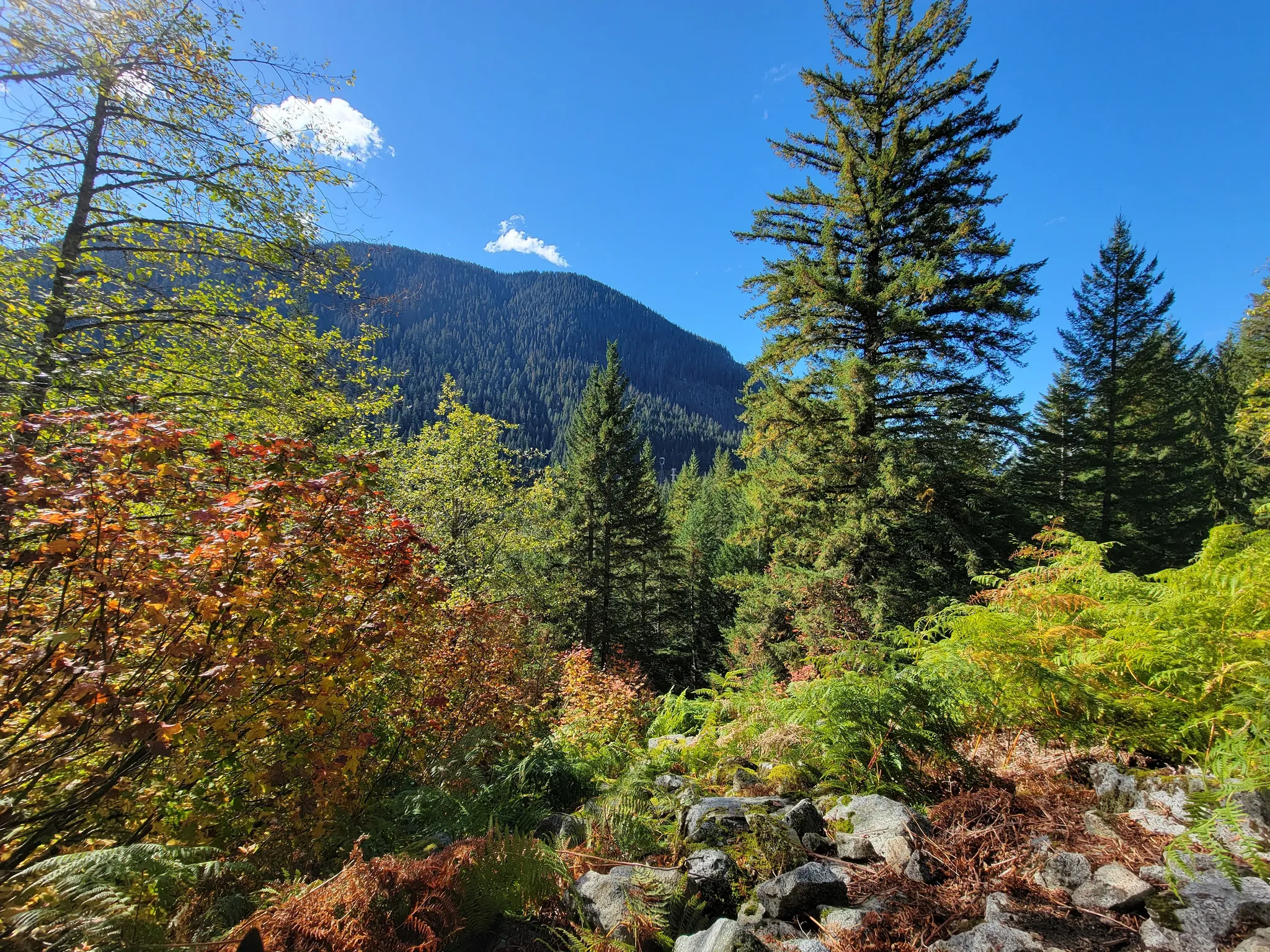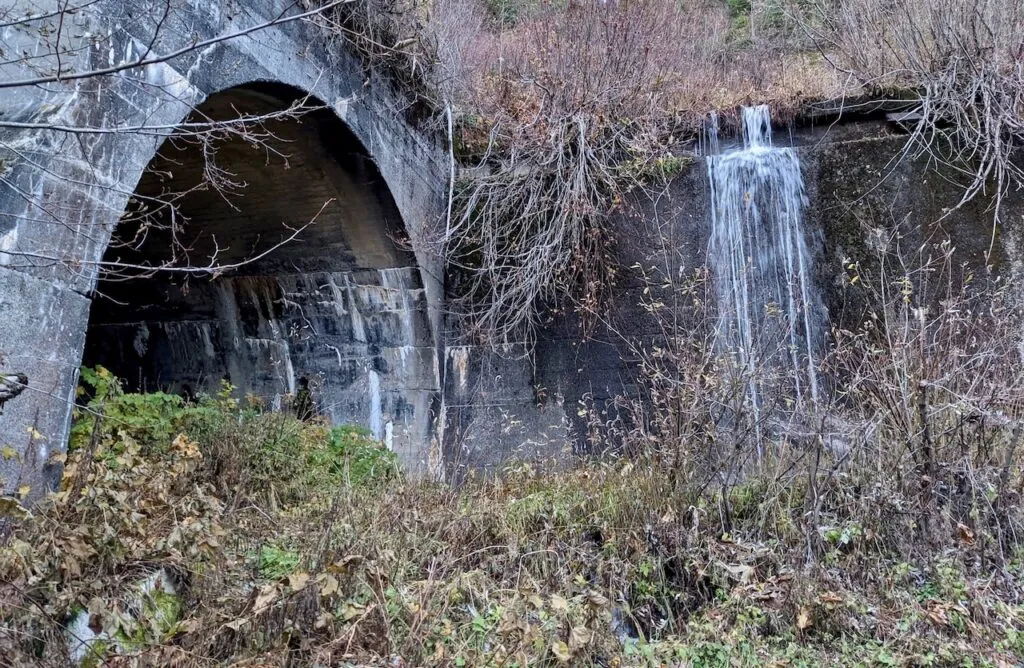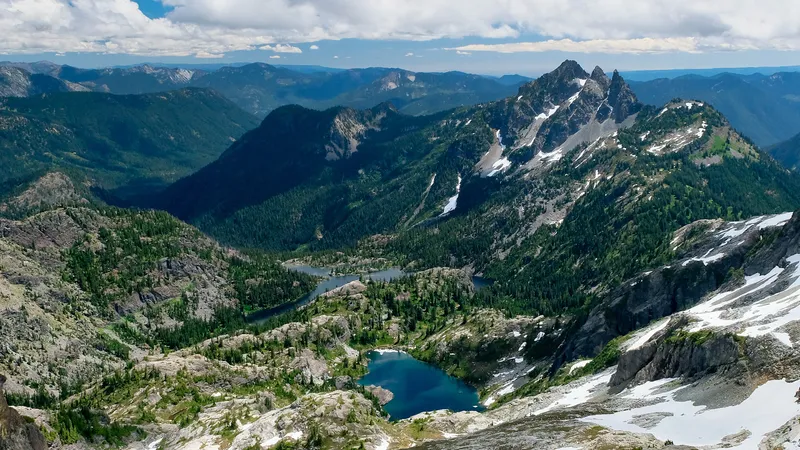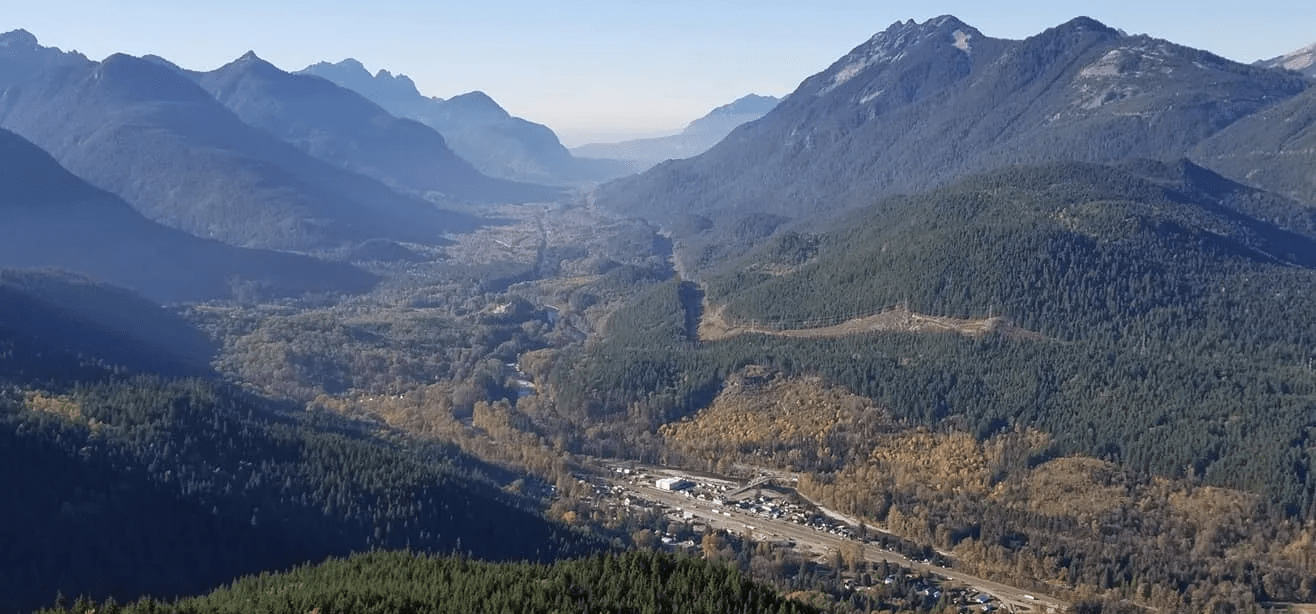Nestled within the majestic Cascade Range of the Pacific Northwest lies a spectacular collection of volcanoes that have shaped the region’s dramatic landscapes. These towering peaks, part of the Cascade Volcanic Arc, stretch from British Columbia through Washington, Oregon, and into Northern California. Many visitors are drawn to their breathtaking beauty, often wondering which of these giants reigns supreme.
The largest volcano in the Cascade Range is Newberry Volcano, covering an impressive 1,200 square miles when considering its lava flows and boasting a total volume of approximately 120 cubic miles. Unlike the iconic cone-shaped peaks that many picture when thinking of volcanoes, Newberry is a massive shield volcano located in central Oregon. Its immense size might surprise travelers who often associate Mount St. Helens or Mount Rainier with volcanic dominance in the region.
Get a discount of 15% to 70% on accommodation near Iron Goat Trail! Look for deals here:
Iron Goat Trail Hotels, Apartments, B&Bs
While Newberry hasn’t experienced major eruptions in recent history like some of its more famous neighbors, its caldera contains beautiful twin lakes and fascinating geological features that tell the story of its volcanic past. Hiking through the Cascade Range offers countless opportunities to witness the power and beauty of these volcanic formations—from the well-known trails around Mount St. Helens to the lesser-known but equally magnificent paths like the Iron Goat Trail in Washington, which winds through an area shaped by these ancient volcanic forces.
Profile of the Largest Volcano
Contrary to what some might expect, the largest volcano in the Cascade Range is not the famous Mount St. Helens or even the towering Mount Rainier, but actually Newberry Volcano in Oregon. This massive shield-shaped stratovolcano covers an impressive area and has a fascinating geological history.
Mount Rainier’s Prominence and Features
Mount Rainier stands as the highest peak in the Cascade Range at 14,411 feet, but Newberry Volcano is actually the largest by volume and area. Newberry covers an astounding 1,200 square miles when including all its lava flows – that’s nearly the size of Rhode Island!
Located about 20 miles south of Bend, Oregon, Newberry stretches approximately 75 miles from north to south and 27 miles in width. Its highest point is Paulina Peak, which offers breathtaking views of the surrounding landscape.
What makes Newberry unique is its massive total volume of approximately 120 cubic miles, making it a true giant among Cascade volcanoes. The volcano features a large summit caldera containing two beautiful lakes – Paulina Lake and East Lake.
Volcanic History and Eruptions
Newberry Volcano has a long and complex eruptive history spanning thousands of years. Unlike the dramatic cone-shaped stratovolcanoes that people often picture, Newberry is a shield-shaped volcano with a broad, gently sloping profile created by numerous lava flows over time.
The volcano has experienced various types of eruptions, including explosive events and quieter lava flows. Its most recent eruption occurred approximately 1,300 years ago, creating the Big Obsidian Flow – a massive field of volcanic glass that visitors can explore today.
Geologists classify Newberry as an active volcano, though it’s currently in a dormant phase. Its geological significance is highlighted by its designation as the Newberry National Volcanic Monument, protecting its unique features for scientific study and public enjoyment.
Current Status and Monitoring
Scientists closely monitor Newberry Volcano for any signs of renewed activity. The U.S. Geological Survey maintains equipment to detect changes in seismic activity, ground deformation, and gas emissions that might indicate an awakening.
While Newberry doesn’t pose the same immediate hazard as some other Cascade volcanoes, its massive size and proximity to populated areas in central Oregon make monitoring essential. The volcano currently shows no signs of imminent eruption.
Visitors to Newberry can safely explore numerous geological features including lava tubes, obsidian flows, and hot springs. The caldera lakes offer recreation opportunities like fishing, boating, and swimming in their surprisingly warm waters, heated by the geothermal energy below.
For those interested in exploring more of the Cascade Range’s volcanic wonders, the Iron Goat Trail in Washington provides another fascinating glimpse into how these powerful geological forces have shaped the Pacific Northwest landscape.
Comparative Analysis of Cascade Volcanoes
The Cascade Range features an impressive collection of volcanoes with varying sizes, shapes, and activity levels. These differences help scientists understand volcanic behavior and allow visitors to experience diverse mountain landscapes.
Physical Characteristics and Geography
The largest volcano in the Cascade Volcanic Arc is Newberry, covering an impressive 1,200 square miles with a volume of approximately 120 cubic miles. Mount Shasta stands out as the second highest and one of the most massive volcanoes in the range.
Before its famous 1980 eruption, Mount St. Helens had the most perfect cone shape of any Cascade volcano. Though smaller at around 3,000 meters elevation, it was notably the youngest and most active in the range.
The Cascade Arc includes nearly 20 major volcanoes among over 4,000 separate volcanic vents. These features include:
- Stratovolcanoes: Like Mount Baker and Mount Hood
- Shield volcanoes: Broader, flatter formations
- Lava domes: Rounded formations from thick lava
- Cinder cones: Smaller volcanic features
Mount Shasta’s appearance differs remarkably from its northern siblings, with its massive bulk creating a distinctive profile on the landscape.
Geological Importance and Risks
The Cascade volcanoes form part of the Pacific Ring of Fire, created by the Cascadia subduction zone where oceanic plates slide beneath the North American continent. This ongoing geological process began about 37 million years ago, though most present-day Cascade volcanoes are less than 2 million years old.
Several Cascade peaks are classified as “Decade Volcanoes” due to their potential hazards to nearby populations. Mount St. Helens demonstrated this risk dramatically in 1980 with its catastrophic eruption.
The volcanoes extend from British Columbia through Washington and Oregon into California, creating a north-south volcanic chain. Scientists closely monitor these giants, especially those near population centers.
Hikers exploring these majestic mountains can witness volcanic features firsthand on trails like the Iron Goat Trail in Washington, which offers stunning views of the western Cascades and insights into the region’s dynamic geological history.
Get a discount of 15% to 70% on accommodation near Iron Goat Trail! Look for deals here:
Iron Goat Trail Hotels, Apartments, B&Bs




